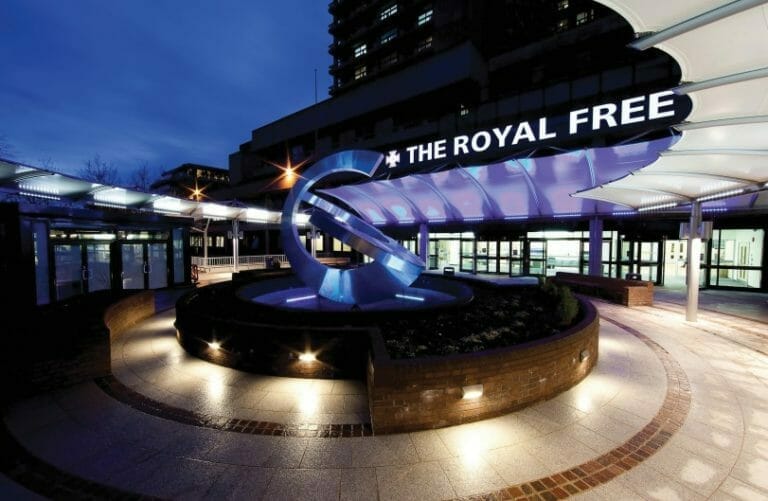Adolescent sport injuries

Our private Adolescent sport injuries services are provided at the Royal Free Hospital, Hampstead.
To find out more about our hospitals click here:
The Royal Free Private Patients Unit runs a comprehensive treatment and diagnostic service for Adolescent Sports Injuries.
In recent years, there has been a growing number of adolescent participants in sports activity, with many paediatric injuries being sports related.
Adolescent sports injuries are grouped into 2 categories based on the type of trauma. Micro occurs due repetitive trauma (wear and tear), whereas Macro injuries are due to a single traumatic experience. If left untreated it can cause a number of issues for the patient including:
- Delayed healing which will hamper a return to sporting activity
- It can make an injury more difficult to treat increasing healing times
- Can result in a more serious injury that could prevent long term sports participation
At the Royal Free Private Patients Unit we have dedicated paediatric consultants who specialise in Musculoskeletal conditions to assist in the diagnosis and treatment of Adolescent Sports Injuries. We can provide specialist treatment for those involved in sport and exercise at every level, providing expert advice to families, using high quality equipment for diagnostic testing.
From outpatient assessments to complex surgical procedures.Our expert consultants are dedicated to treating orthopaedic patients, supported by specialist nurses and therapists who help regain health and mobility as quickly as possible through the appropriate rehabilitation.
We offer the following diagnostic treatment services for adolescent sports injuries:
- Shoulder instability, dislocation – this is when your shoulder dislocates from the joint. When this happens it is likely this injury will occur again causing the shoulder to slip out of place repeatedly. Sometimes overuse can cause Shoulder instability forcing the upper arm out of the shoulder socket. This procedure is designed to tighten and repair the shoulder joint. Physiotherapy after your procedure is often necessary to help you regain your movement and flexibility.
- Shoulder stabilisation, arthroscopy – a minimally invasive surgical procedure performed through tiny incisions (portals), about half-inch in length made around the joint area. Through one of the incisions, an arthroscope (small fibre-optic viewing instrument) is passed through the targeted area. This allows your surgeon to look at the cartilage, ligaments and the rotator cuff while performing the procedure.
- Fractures of the clavicle shoulder and elbow (broken collarbone) – often caused by a direct blow to the shoulder, this can happen during a fall onto the shoulder or a collision with someone else. Surgery may not be required depending on the injury and this can heal with the correct arm support, medication and physical therapy.
- Elbow ligament injuries – this occurs when there is a tear in the ligaments, this can happen suddenly or overtime with repeated stress on the ligament through sporting activity. Athletes in sports such as tennis or cricket are at particular risk of this with symptoms including pain on the inner side of the elbow, stiffness of the elbow joint, numbness or tingling of the fingers, and a weak hand grip. Surgery is usually required when this occurs but it is dependent on the extent of the injury which will be discussed with your consultant.
For more information, a quotation or to book an appointment, please contact our dedicated enquiries team who are available Monday – Friday from 8am – 6pm on 020 7317 7751 or rf-tr.privateenquiries@nhs.net.
Get in touch
